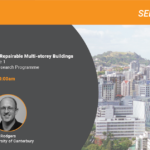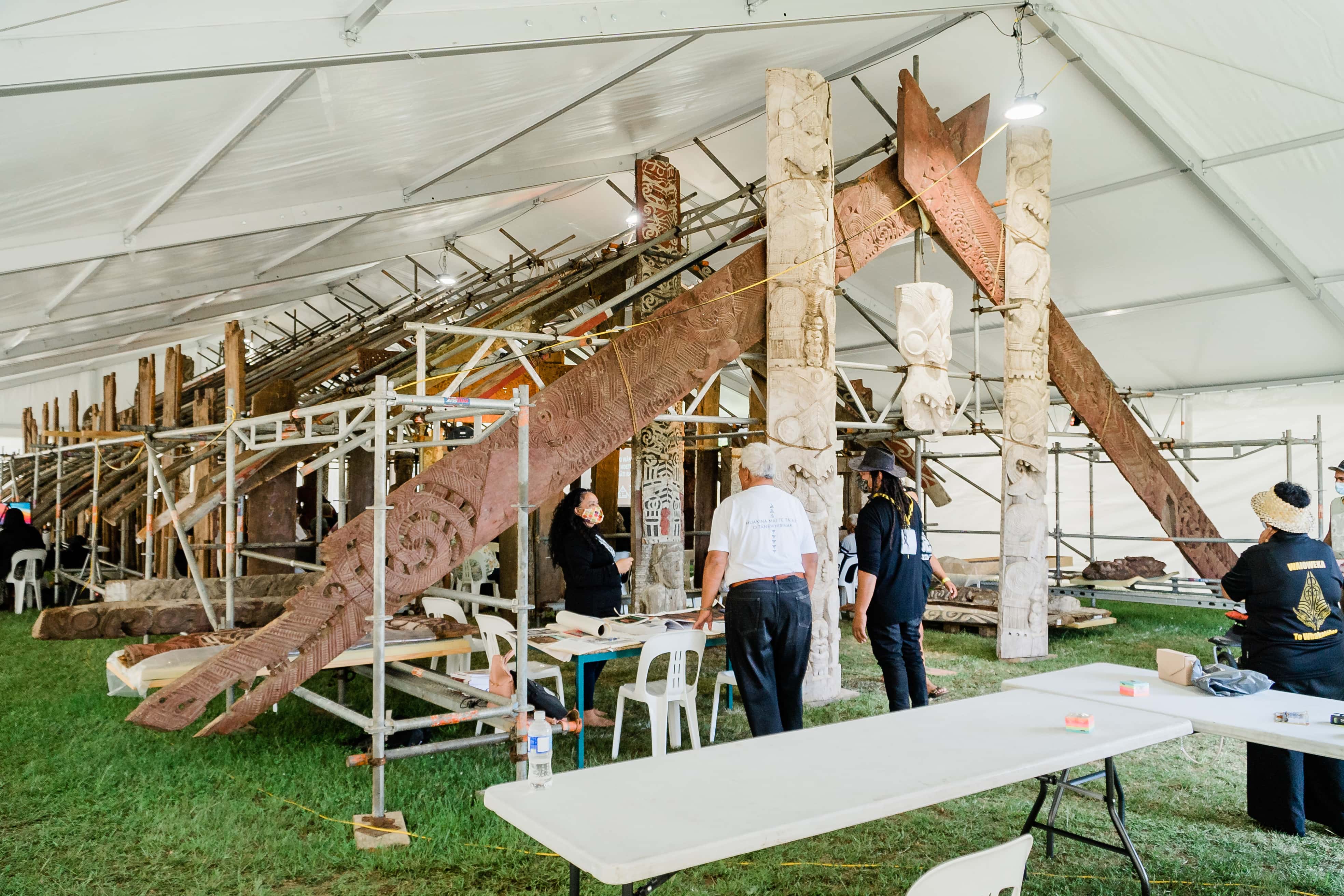
QuakeCoRE Seminar – 10 June 2022
February 21, 2022
NZSEE 2022 Award Recipients
May 4, 2022Anthony Hoete (Pouwhakahaere Māori | Associate Director – Māori), working with the hapū Ngāti Ira O Waioweka, was shortlisted this month for a 2022 NZIA (New Zealand Institute of Architects) Waikato & Bay of Plenty Architecture Award for their QuakeCoRE / EQC aligned project, Te Whare Rangitupu, or The Scaffolded Whare.
_______
This is a temporary structure located on Opeke marae, at the entry to the Waioweka Gorge, for a three-day hapÅ« wÄnanga in January 2022. With this shortlisting, the NZIA recognises that not all structures need to be monumental and permanent. Ephemeral pop-ups like Te Whare Rangitupu have value in augmenting participatory co-design methodologies between the community and the built environment professionals who serve them. Te Whare Rangitupu houses and supports the original century-old whakairo (carvings) of the whare Tānewhirinaki so that the hapū can experience their tÄ«puna (ancestors) in a wÄnanga setting. Comprising over 100 whakairo, which had stood since before the 1931 Hawkes Bay Earthquake, their temporary suspension in a scaffolded structure is especially poignant – just two living members of the hapū have ever seen the whakairo standing in their rightful place. A secondary purpose of Te Whare Rangitupu is to facilitate the LiDAR scanning of this whakairo so that a digital twin can be produced. With this digital twin, full-scale post-tensioned seismically resilient timber portals could be designed, built, loaded, and tested, in the field, on the marae.
_________
One serendipitous outcome of Te Whare Rangitupu was that it evoked an alternate yet innovative proposal for the carving’s permanent treatment. Within the future reconstructed whare Tānewhirinaki, the carvings could be suspended. Such a heritage strategy would delaminate new building fabric from old, allowing one to pass behind the carvings that see the previously concealed ancient Māori post-tensioning technology.
_______
The original wharenui Tānewhirinaki was built in 1874 by Hira Te Popo, a revered rangatira. Te Popo commissioned Tānewhirinaki to restore the mana of his people devasted by the sacking of Te Tarata pā and the subsequent raupatu (land confiscation) associated with the East Coast War. The whakairo tell stories – of ancestors and, significantly, Tānemuta (god of the forest), from which the name of the whare is derived. Hewn originally from totara, the whakairo are today older than the adjoining forests – torched as part of the colonist-’s scorched earth policy. The legacy for the hapū has thus been one of struggle. While reconstructing their ancestral house is of great importance, it also benefits NZ. A lashed, post-tensioned structure is an early example of indigenous innovation in dealing with wind and seismic forces with potential ramifications for the future of housing in this country.
__________
______

_______

Ka rawe, Anthony and team.
Anthony is a Professor of Architecture (Māori) at the University of Auckland and is of Ngāti Awa and Ngāti Ranana descent. Anthony’s research addresses the links between architecture, practice, housing and indigenous culture including a focus on:
– Ngārchitecture: Kō-design through kaupapa, tikanga and future whare, indigenous led design
– Game of Architecture: Architecture as gameplay
– Kiwipedia: Affordable housing in Aotearoa New Zealand utilising urban densities with suburban qualities
– ABCLT: Architecture, building and cross laminated timber
– Spatial mobility: Reader of the aesthetic of mobility
– Game of Architecture: Architecture as gameplay
– Kiwipedia: Affordable housing in Aotearoa New Zealand utilising urban densities with suburban qualities
– ABCLT: Architecture, building and cross laminated timber
– Spatial mobility: Reader of the aesthetic of mobility




